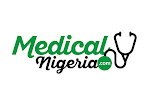Objectives
At the end of this presentation we should be able to:
Accurately assess a client`s blood pressure using the right clinical technique and equipment
Interpret blood pressure reading in relation to factors affecting blood pressure like age, sex, medical condition, diurnal variation, exercise, stress, race, obesity, temperature etc.
Introduction
The importance of the accuracy of blood pressure assessment cannot be overemphasized. Many clinical Judgements about a client`s health are made based on blood pressure. It is an important indicator of the client`s condition and is used extensively as a basis for intervention.
Glossary
Arterial Blood pressure: a measure of the force exerted by the blood as it flows through the arteries.
Systolic pressure: is the pressure of the blood as a result of the contraction of the ventricles.
Diastolic pressure: is the pressure when the ventricles are at rest.
Pulse Pressure: is the difference between the systolic and diastolic pressures
Hypertension: blood pressure that is persistently above normal
White coat Hypertension: is an elevation in blood pressure due to mild anxiety associated with the health care provider`s presence.
Hypotension: is blood pressure that is below normal
Orthostatic/Postural hypotension: is blood pressure that falls when the client sits or stand from a lying position.
Korotkoff`s sound: the series of sounds identified when auscultating the arteries during blood pressure measurement.
Auscultatory gap: is the temporal disappearance of sounds normally heard over the brachial artery when the cuff pressure is high followed by the reappearance of the sound at a lower level. This is particular of hypertensive client.
Determinants of Blood Pressure
Arterial blood pressure is the result of several factors. Some includes:
The pumping action of the heart
Peripheral vascular resistance
Blood volume
Blood viscosity
Factors affecting Blood pressure
Age
Exercise
Stress
Race
Sex
Medication (e.g vasodilators, caffeine etc)
Obesity
Diurnal variation
Medical condition (severe burns, haemorrhage, dehydration, tumours, head injury)
Temperature
Assessing Blood Pressure
Requirement:
Blood pressure cuff (an appropriate size)
Sphygmomanometer
Stethoscope
Blood Pressure Assessment Site:
The client`s upper arm (either left or right)
The client`s thigh (either left or right)
Methods
Direct invasive monitoring
Non-invasive indirect method
Auscultatory method
Palpatory method
QUICK WAY OF ASSESSING SYSTOLIC BP IN A CHILD
Common Errors in assessing Blood Pressure
This article was written by Nurse Alexander Entonu of Hope Haven Hospital, Jos Nigeria.









Comments
Post a Comment
Premium, Professional CV Revamp and Rewrite services with a FREE Cover Letter from MedicalNigeria at #3,500! WhatsApp- 07038844295 to get Started!